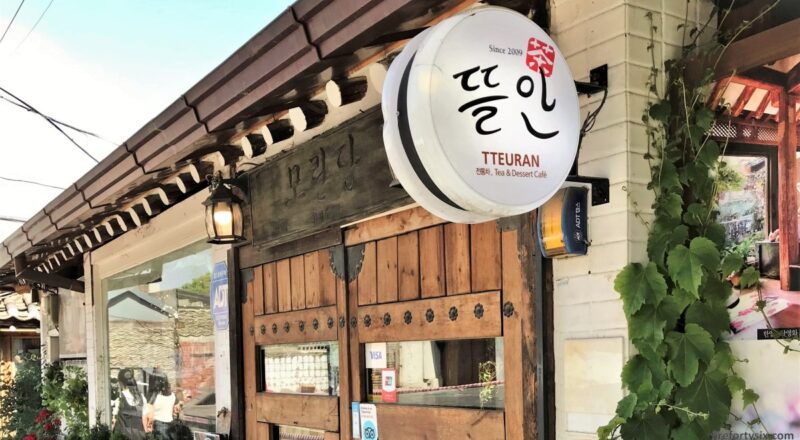Of all the Seoul neighbourhoods that we’ve visited so far, Ikseondong is our favourite.
It’s compact, easily accessible (via Jongno 3-ga station on subway lines 1, 3 and 5) and filled with unique shops, restaurants and cafes housed in beautiful traditional hanoks.
We liked it so much that we actually visited it twice during our ten day vacation. The first time was on the very next day after we landed, with a repeat visit within the same week.
It was crowded on both occasions, with foreigners from different countries forming the majority. But there were also many people who were speaking Korean, which were presumably locals enjoying a beautiful day out.
I suppose you could say that Ikseondong is a tourist trap, but it’s popular for a reason. If you’ve not been there before, I highly recommend that you spend at least a couple of hours wandering the narrow alleys.
And when your feet start feeling weary, Tteuran Teahouse is a good place to rest your heels and enjoy a brief respite from the crowd.
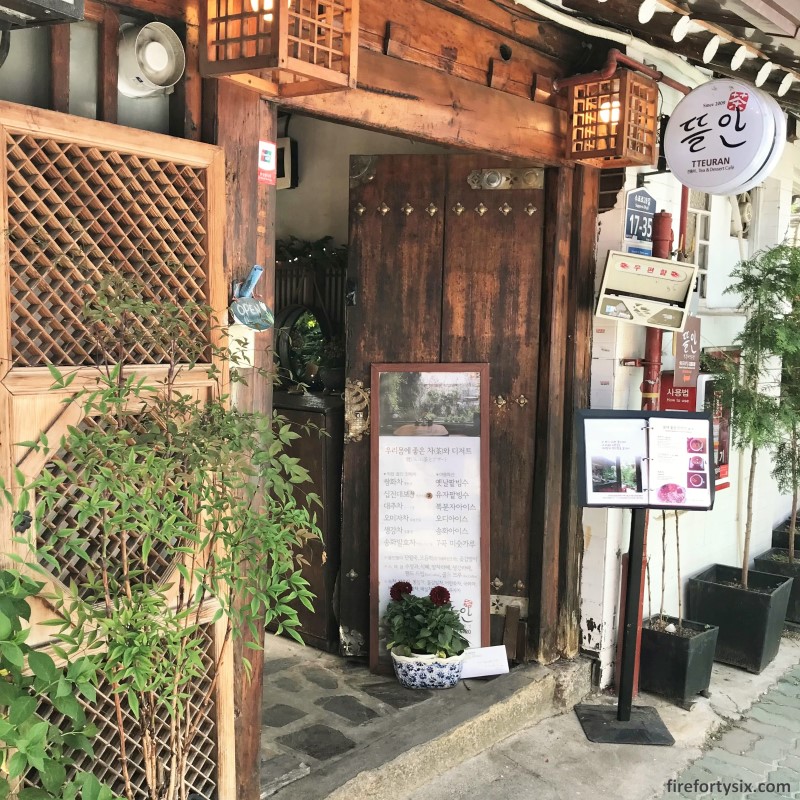
As you step through the heavy wooden doors and into the petite plant-filled courtyard, you can’t help but feel a sense of serenity wash over your entire body.
Make no mistake, you’re still in the heart of a concrete jungle. In a dense metropolitan city where more than half of the country’s population resides. But a moment of tranquility is yours to enjoy as you enter this cozy little teahouse.
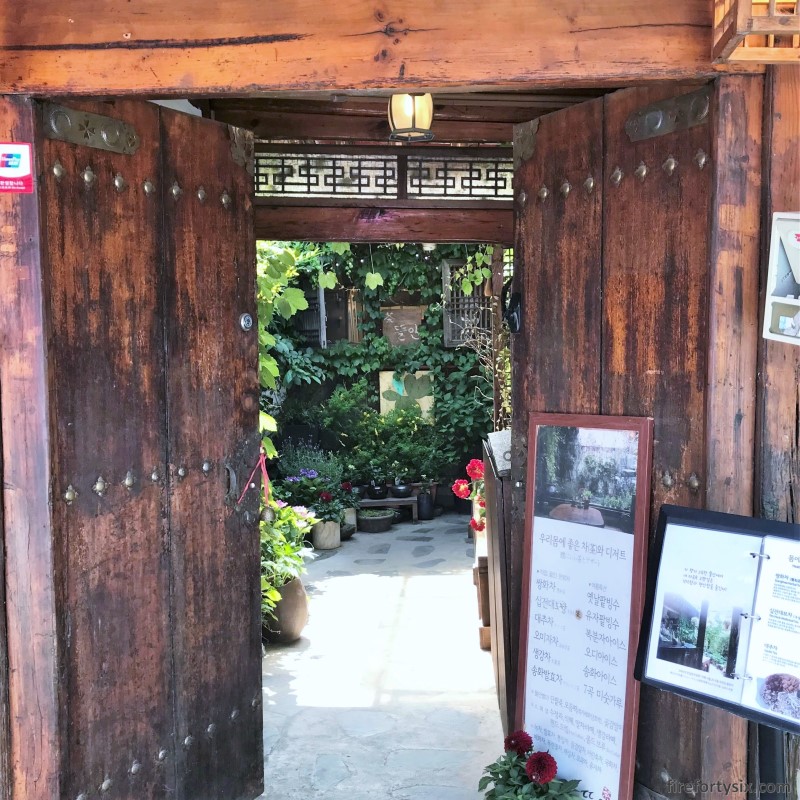
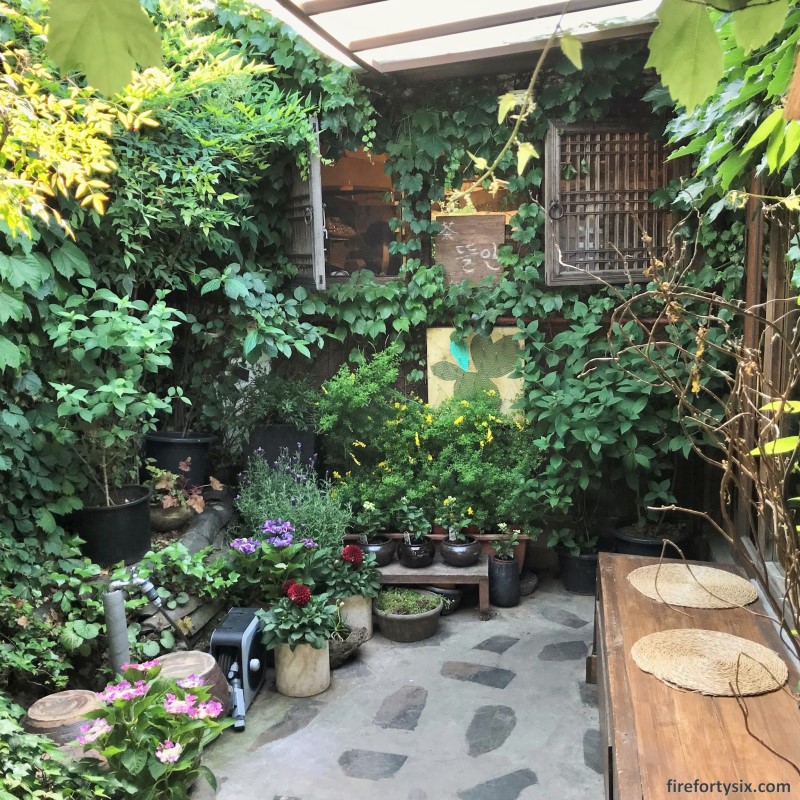
Wood is the dominant element in the beautifully decorated interior, from the structural beams and pillars to the furniture and flooring.
Floor seating is especially popular, not just with tourists keen on experiencing something new, but also with elderly locals who, perhaps, are indulging in a spot of nostalgia.
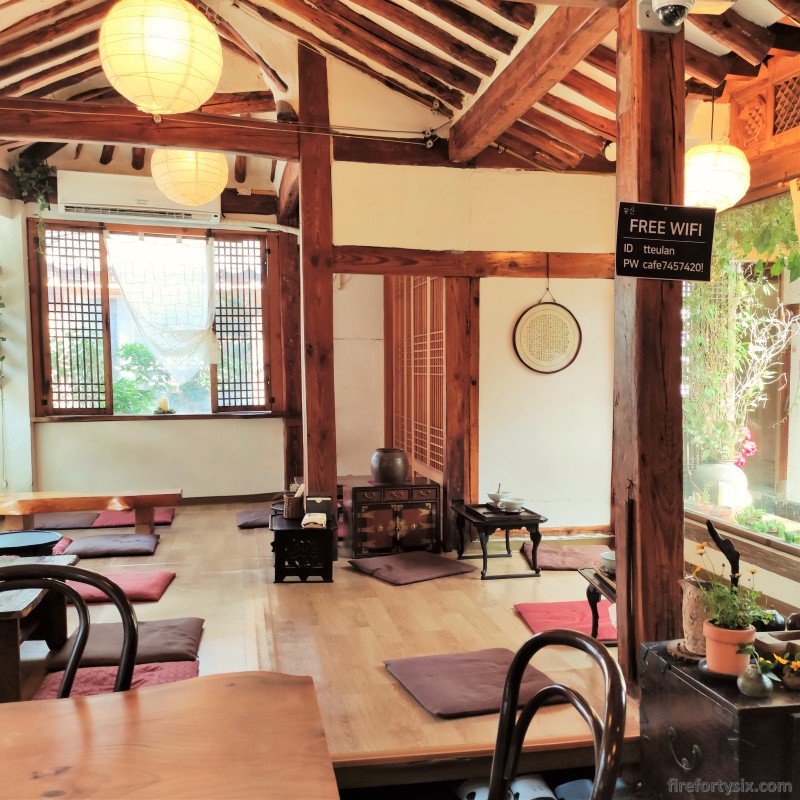
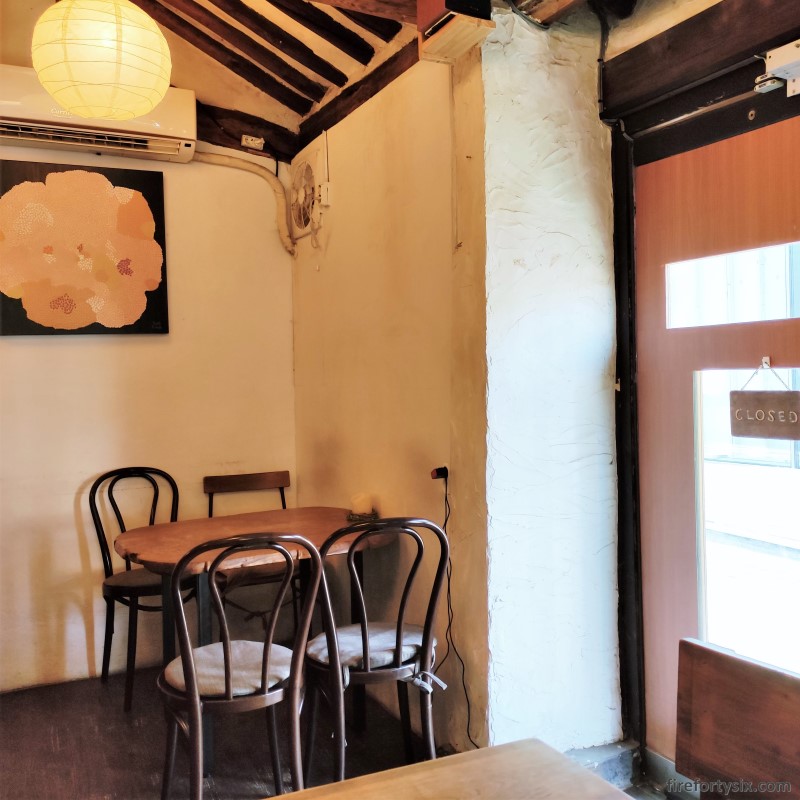
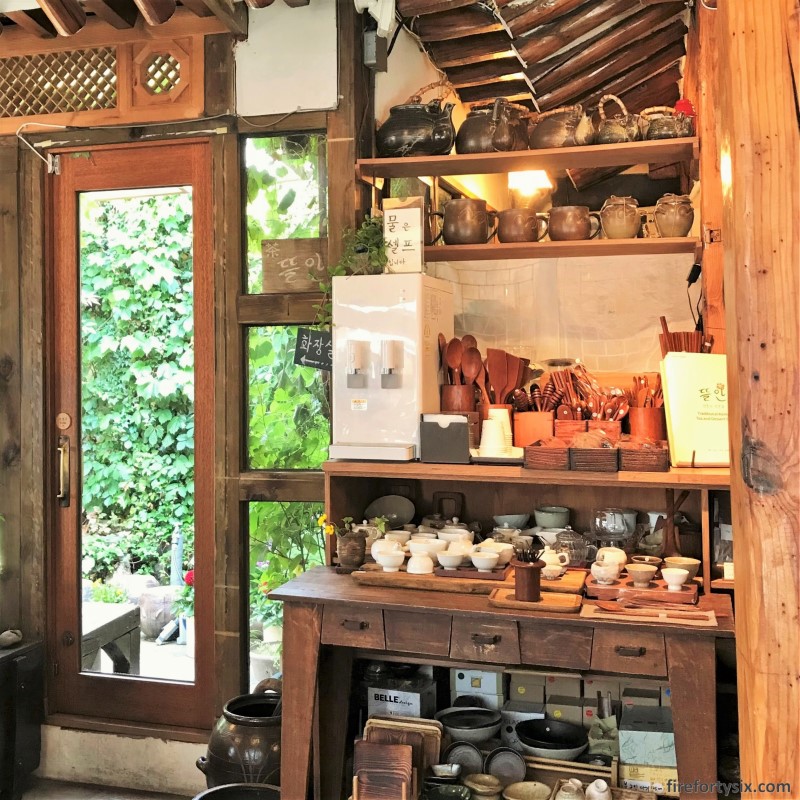
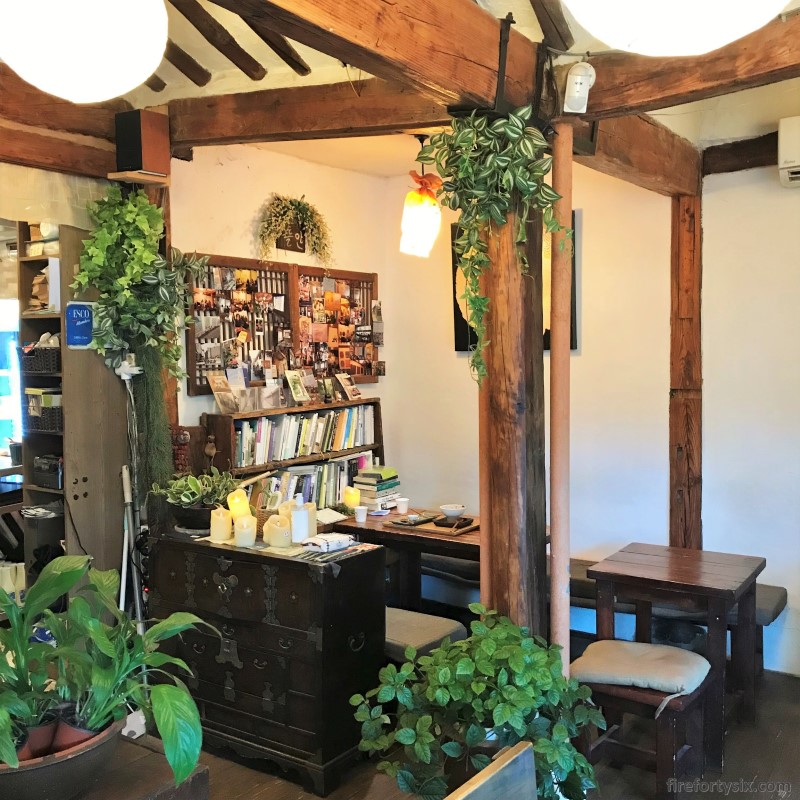
The menu starts with five pages of various teas, ranging from medicinal blends to fermented teas to those made with wild leaves and flowers.
This is followed by two pages of traditional sweets and snacks, a page of non-tea related beverages and ending with a limited-edition menu that changes with the seasons.
While the selection of teas is quite extensive, it’s not overwhelmingly so. English names are conveniently provided, though detailed explanations are exclusively in hangul.
Not a problem if you have the Papago app, which has a useful real-time image translation function.
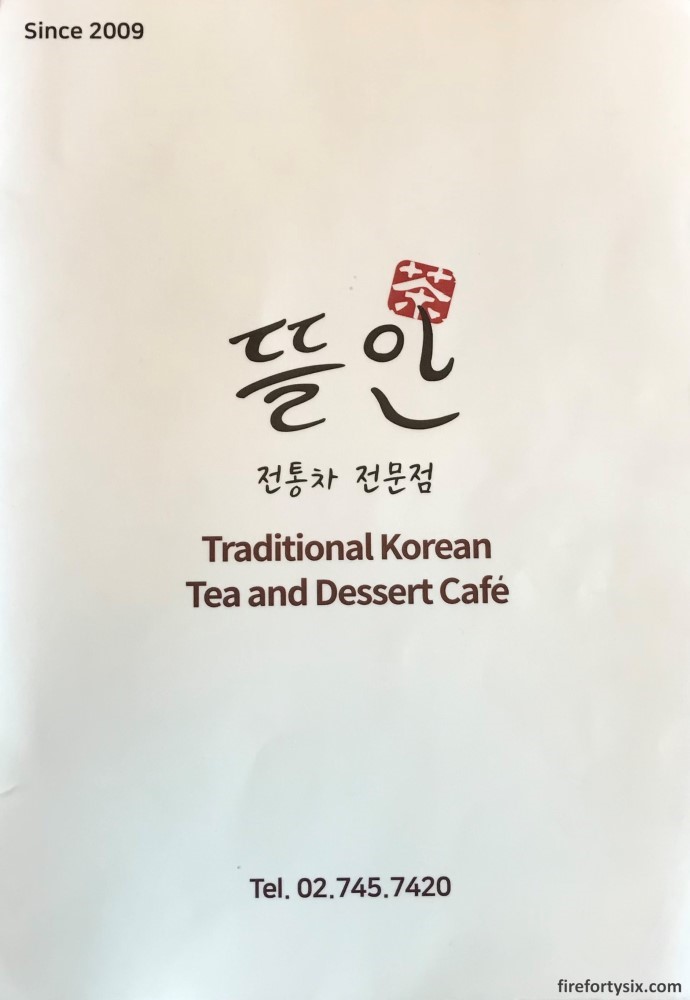
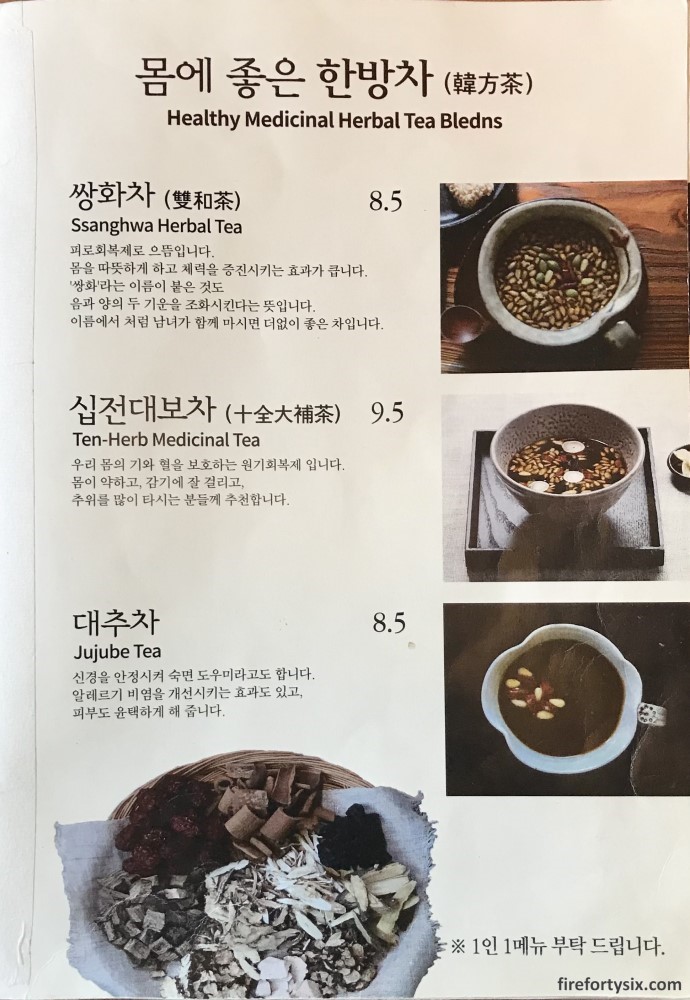
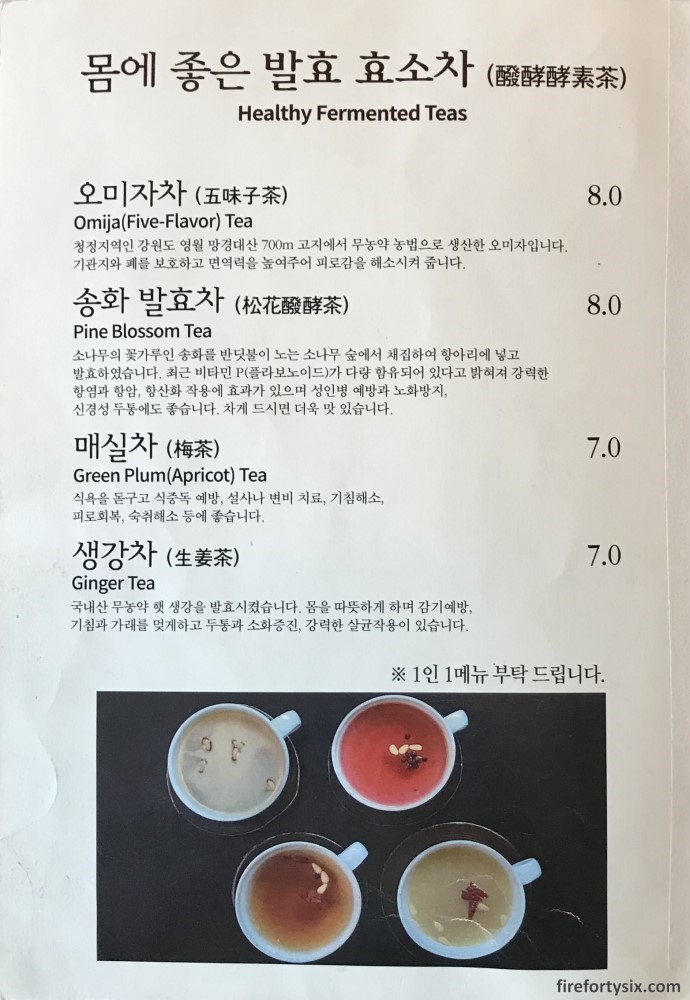

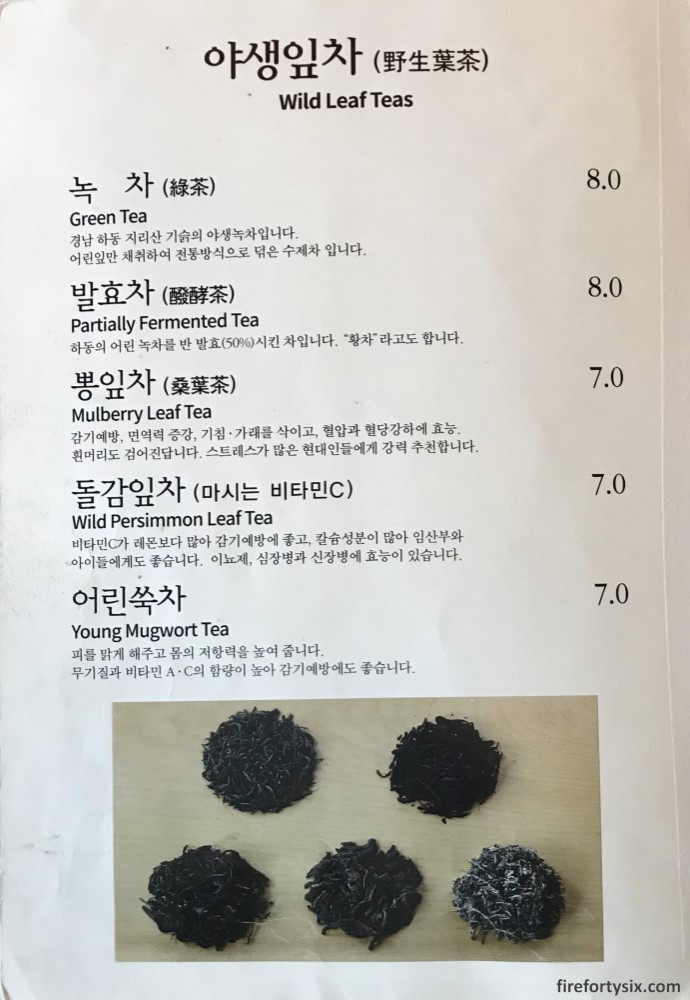
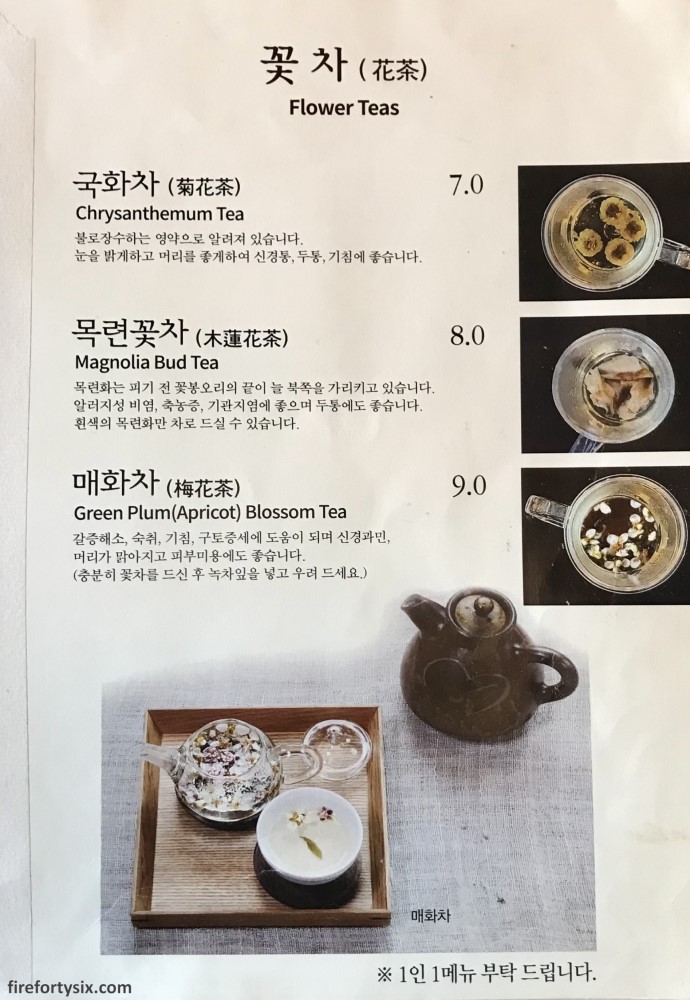


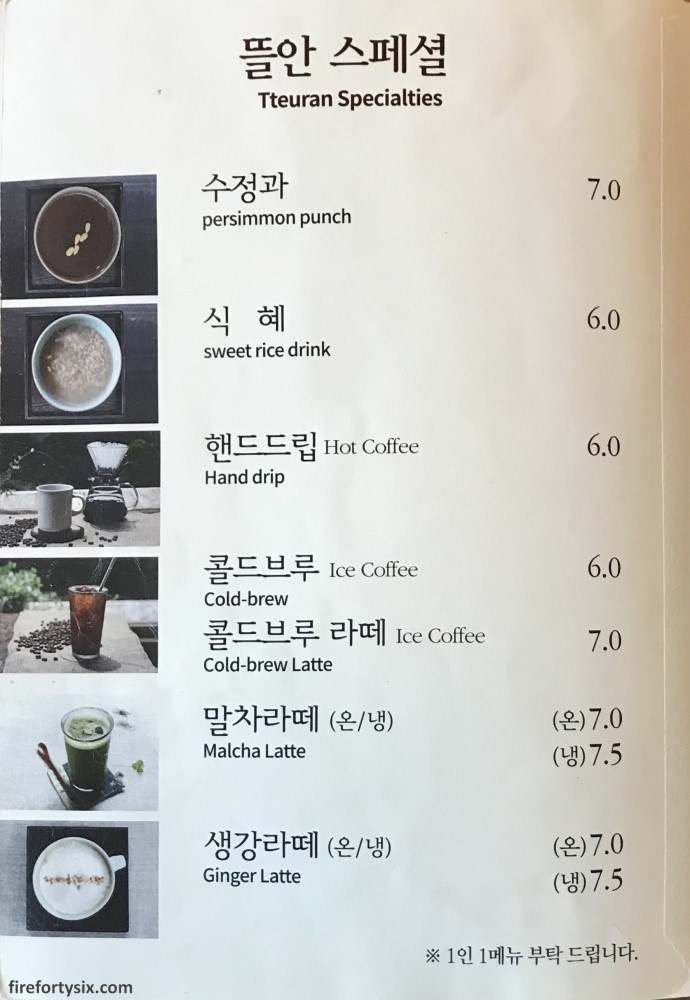
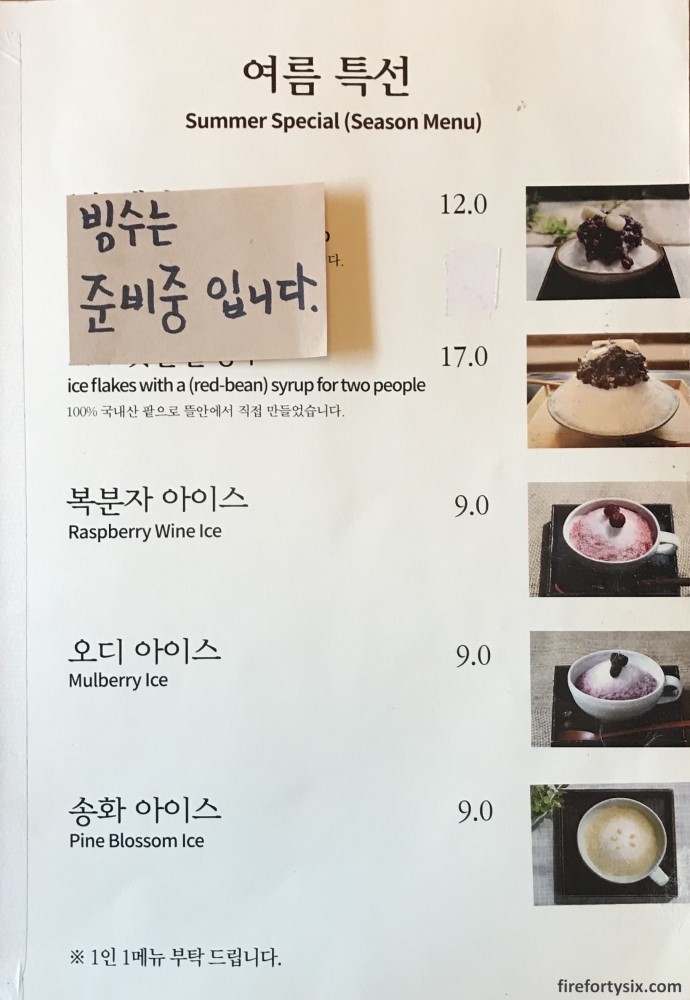
We decided to go with two different teas, one each from the medicinal and fermented categories. The fermented Omija (Five-Flavour) Tea had the following description, as translated by Papago:
“Omija produced by pesticide-free farming method at 700m highlands of Manggyeongdaesan Mountain in Yeongwol, Gangwon-do, a clean area. It protects the bronchial tubes and lungs, and improves immunity to relieve fatigue.”
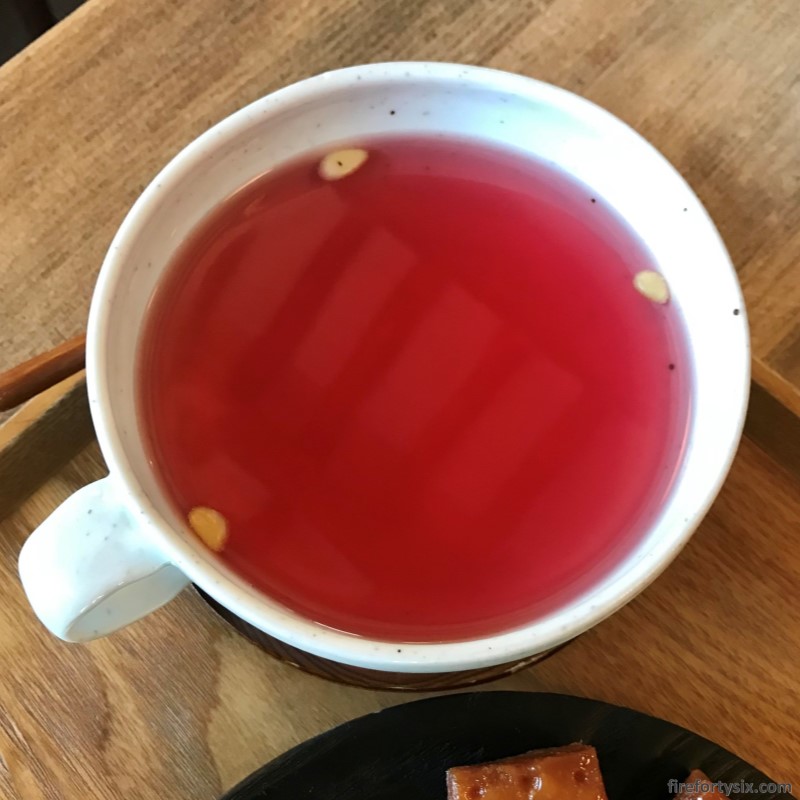
The hot, red and clear liquid was refreshingly tart. It tasted strangely similar to cranberry juice, if cranberry juice was actually served warm.
Did it relieve our fatigue? I would say yes. Did it protect our bronchial tubes and lungs? Perhaps. Did it improve our immunity? I suppose time will tell.
The Jujube Tea tasted quite the opposite. It was dark and murky, with a sweet and heart-warming flavour.
According to Papago: “It stabilises the nerves and is also called a sleep helper. It’s effective in improving allergic rhinitis and moisturising your skin.”
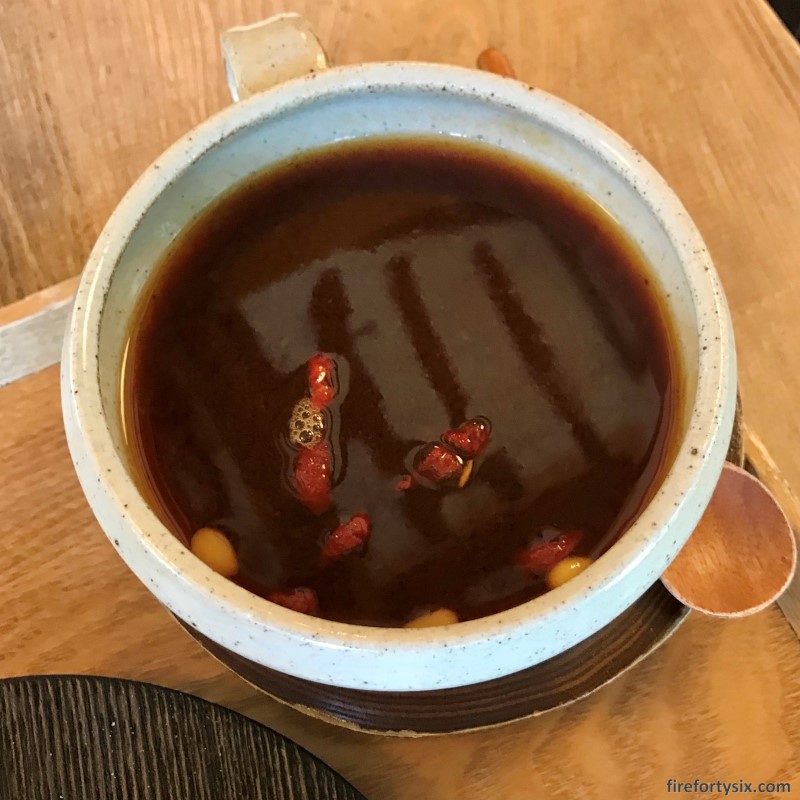
Jujube is not my cup of tea, but I gladly made an exception for this particular one. In addition to the brewed liquid, it also contained generous amounts of the finely-blended fruit that remained suspended.
I’ve never had tea that tasted like it before, and even though my hot beverage of choice is black pour over coffee, I would gladly order this jujube tea again in the future.
To accompany our teas, we ordered a sampler plate of Traditional Korean Sweets.
We easily identified the dense yakgwa on the top of the plate, and the dried persimmon stuffed with walnuts on the bottom, but couldn’t figure out the other two.
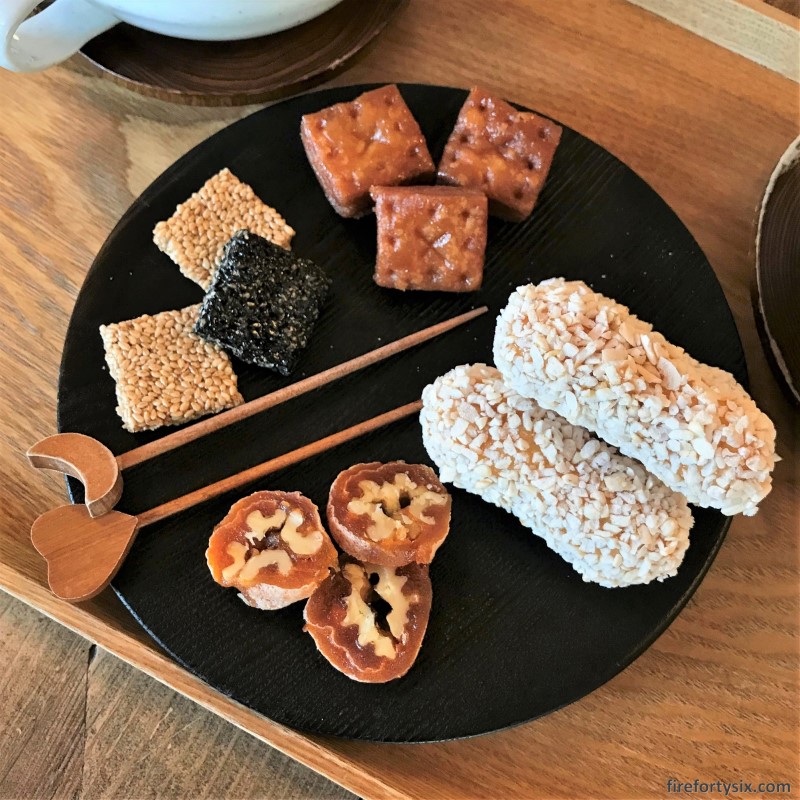
Google Lens informed me that the white cylindrical rolls on the right were yugwa, a crispy and fluffy deep-fried treat.
It had trouble with the remaining dessert, but it tasted very similar to Chinese sesame candy. It was interesting to observe how similar Korean and Chinese sweets were, in both taste and texture.
We nursed our drinks and nibbled on our snacks, people watching as customers of all stripes came and went.
After spending a peaceful two hours in Tteuran, we finally left the little oasis of calm and headed back out into the busy alleys of Ikseondong.
